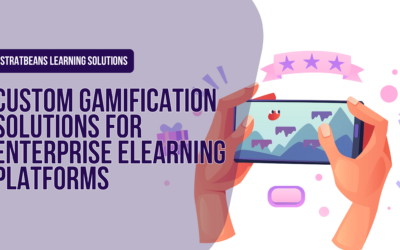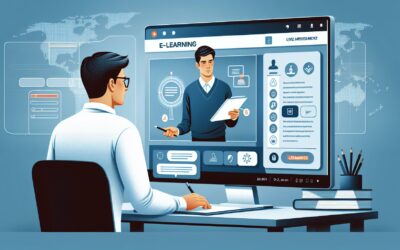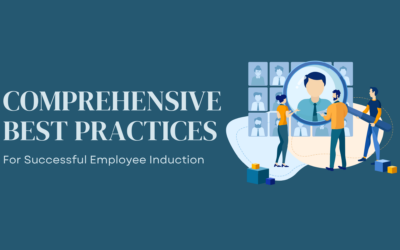Onboarding solution: 9 things to consider
Onboarding solution: 9 things to consider
The first impression matters. Even though onboarding is an essential step in the employee lifecycle, statistics show that we continue to fail to provide exceptional experiences for our new hires. How can you ensure that an onboarding solution for your company meets all requirements?
Every business ought to place the long-term success of its new hires as its top priority.
After all, we’ve spent a lot of time and money looking for these highly sought-after, thoroughly vetted, and market-leading examples of talent. These candidates are also in charge at a time when unemployment is at an all-time low; bringing with them high expectations and a capacity to leave almost immediately.
It is in everyone’s best interest to get them oriented, embedded, and up to production as quickly as possible. Furthermore, 93% of bosses concur that a decent onboarding experience is basic to impacting a fresh recruit’s choice to remain with the association.
We recognize its value and significance, but the truth is We are still not getting it right.
Onboarding solutions are becoming increasingly popular as a way to manage the processes, workflows, and experience of new hires in light of the digital workplace’s ever-expanding potential. It is essential that our chosen onboarding solution fulfills all relevant requirements and provides a demonstrable return and value to both the business and the employee, given the amount of choice and investment.
So, where should you begin?
Why do we require a solution for onboarding?
Where is the demand for technology in the onboarding process if the most important tasks are completing paperwork, receiving training, or meeting one-on-one with line managers?
Execution of formal onboarding cycles might be developing, however, onboarding programming reception keeps on slacking. However, implementing a specialized employee onboarding tool provides several advantages that go beyond what the majority of us are aware of. These are some:
- Process and paperwork streamlining and simplification, including digitalization of antiquated paper-based methods
- Consistency in company-wide information and application during onboarding is considered by HR Managers as the top problem, despite the fact that needs will naturally differ depending on department and job. Standardizing onboarding procedures throughout the organization (HCI, 2016)
- Easing a load of HR and administration by allowing new hires to self-serve
- Increasing productivity through centralized, convenient access to others, knowledge, and content
- facilitating adaptive e-learning, training, and onboarding sessions according to the user’s device, location, and needs
- Allowing the person to access the digital workplace and become familiar with the culture, values, and mission of their new company
While it’s true that administrative tasks are important, as evidenced by the fact that 58% of organizations claim their onboarding programs are centered on procedures and paperwork and the fact that the average new hire has 54 activities to complete during their onboarding experience the picture is not complete. Onboarding software can be quite useful in this situation.
When selecting an onboarding solution, what factors should we take into account?
Each company, department, and even individual employee will have its onboarding procedures and practices. Before choosing a platform or solution, each organization must identify its requirements, shortcomings, gaps, or priorities.
It is possible to gain valuable insight and direction by speaking directly with employees who have recently gone through the onboarding process or are currently going through it. Line managers can provide departmental experiences and highlight their own needs because they are in charge of the hands-on onboarding process.
At last, arrangements should pay all due respects to the center necessities of customary onboarding yet in addition offer adaptability to be customized by individual requirements.
So, what should we think about?
1. Frontline workers who are mobile, remote, and dispersed
Spread out today’s businesses are still experiencing a “decentralization” of their operations. The gig economy, globalization, “office-less” workplaces, and flexible and remote working all present a unique obstacle for onboarding.
While numerous associations will decide to acquire staff house for an underlying week or more, onboarding is – or ought to be! – be a process that takes much longer than this.
To reach this group of workers, who are most likely to become disengaged or leave a company, an onboarding solution that is accessible, cloud-based, and mobile-ready or that provides an employee onboarding app is essential.
2. Pre-boarding
An excessive number of recently selected representatives are left in a quiet limbo during the period from the offer letter to the first day.
The recruitment and onboarding cycle is arguably one of the most vulnerable times; counteroffers can be extended, interest wanes, and uncertainties emerge. How are we going to keep our new staff’s enthusiasm and interest if we don’t have the momentum of being at the center of the new organization?
The solution might be an onboarding solution that provides a pre-boarding experience, such as custom homepages that present the relevant information to build and maintain interest or temporary login details with permission-driven content restrictions. Put this feature on your wish list if your company has a lot of first-month turnover or failures to start.
3. The broader digital workplace
Today’s workplaces make extensive use of digital tools; The typical business uses 500 different applications, including project or task management, cloud storage, email, productivity tools, communication tools, and more.
Careful management is required when adding a new tool to a technology stack that is already complicated. Where will your onboarding solution fit in with the platforms that are already in use? Are there any particular tools that must seamlessly integrate with it? for instance, your payroll software, performance management platform, or HR software? Can it solve problems that aren’t being solved by the tools that are already in use?
It’s critical to have a well-defined plan that outlines the boundaries, use cases, and compatibility of your various platforms; particularly if there is a cross-over concerning usefulness or reason. If integration functionality is high on your priority list, check it out.
4. Management of passwords
The average email address is associated with 130 or more accounts that require passwords. As a result, many people continue to use weak or reused passwords, despite increased awareness of the risks involved. This poses a significant cybersecurity risk for businesses.
A top priority for the business is reducing the number of passwords required and the administrative burden placed on IT by their management; This should be on your radar because the majority of accounts are created during the onboarding period.
Consider onboarding solutions that support single sign-on (SSO) when looking for one. With just one login, employees can use the platform to access multiple other software and tools within your company. This may reduce the number of passwords needed and, as a result, the business’s vulnerability or risk.
5. People are more than just a job title
The old staff directory and organizational chart are becoming less and less useful for new employees. Additionally, organizations are operating with greater agility.
According to Gartner, “the Uber model of working,” in which individuals are brought into a project based on their skill and experience rather than residing in rigidly defined departments, will replace departments as we know them today.
As a result, it could be argued that the ability to search by skillset, expertise, experience, or interest is more valuable than just the traditional name and department.
One of the most important aspects of employee engagement is the company culture. We can assist in instilling connections and a sense of belonging from day one by connecting new hires with their colleagues as peers and individuals, as opposed to faceless job titles. Through virtual water coolers, employees can get to know each other better, chat, share, and feel like they are a part of the company thanks to technology.
Rich profiles that go beyond basic contact information and social tools that let employees connect with people outside of their roles should be on the wish list when looking for an onboarding solution.
6. The employee lifecycle is shaped by changing needs and experiences
At each stage of a staff member’s journey through work, an onboarding solution must provide individualized experiences. We’ve also talked about how onboarding is usually different for each department or role.
Therefore, this demand for individualized experiences ought to be reflected in the information provided during onboarding. Users will be engaged throughout the onboarding process thanks to the ability to pull through dynamic content based on persona characteristics like job title, seniority level, location, department, completed training, and other details.
All of this makes the employee’s experience better and reduces the burden on the employer.
7. Work processes and desk work are a means to an end
We’ve contended that onboarding ought not to be exclusively centered around desk work; However, it is a business requirement, and as such, it should be met by your onboarding solution.
Think about features that can speed up time-consuming processes and workflows. A centralized digital portal should be used to manage digital forms, mandatory read functionality for compliance, digital signatures, and the submission of important information like bank or tax details, contact information, references, and more.
Both the employer and the employee will feel less pressure as a result, and there will also be less of a chance of inaccurate information being provided.
8. Knowledge is shared by the entire organization
Even if your employee handbook is comprehensive, it will not cover every potential question that new hires may have.
Additionally, the majority of knowledge is not stored in your company’s DMS, documentation, or policies. It is held by individuals.
Users should be able to access your organization’s various knowledge reservoirs through an onboarding solution. This might incorporate, for instance, a venture search that can wisely pull results from across a huge number of various sources; forums with questions and answers that are part of the search; or the selection of designated experts to respond to inquiries based on their expertise or experience.
Regardless of location or position, employees should be able to appeal to their peers during onboarding; removing a great number of the organization’s traditional barriers.
The best part is that that knowledge can be saved digitally for later use; even after the experts who were selected have left the company.
9. Onboarding is a time of data over-burden
The underlying time of business is regularly a time of extraordinary learning. Even experienced candidates will need to be familiar with the new organization’s distinct cultures and procedures.
It’s hard to keep that information. Employees can revisit the training materials, complete modules or training at their own pace, and self-serve in their early development with the help of an onboarding solution with a centralized CMS or e-learning functionality. Upskilling remote workers in this way is also essential.
Uploads of multimedia, such as PowerPoint and PDF files, videos, and images, are an essential component of this puzzle; Here, functionality like quizzes and tests, analytics to track progress, question-and-answer forums, and more must all be taken into account.
A broader onboarding strategy includes onboarding solutions.
A thoughtful onboarding strategy that considers the entire employee experience can be supported by a digital onboarding solution: For instance, a face-to-face conversation with a line manager cannot be replaced by it. This is essential to keep in mind; Purchasing a tool and using it is not a cure-all.
On the other hand, it is possible to address a variety of common issues that arise during onboarding with a thoughtful approach and strategy. Many of today’s digital workplace solutions and intranets are designed to provide an outstanding experience at every stage of the employee lifecycle, not just the first few weeks, although the wishlist of features and functionality will vary from organization to organization.
Learn More
Our News
- AI
- Animations
- Articulate
- Articulate 360
- Articulate Engage
- Articulate Live
- Articulate Presenter
- Articulate Quizmaker
- Articulate Replay
- Articulate Review
- Articulate Storyline
- Articulate Storyline 3
- Articulate Studio
- bite sized learning
- Characters
- Content Library
- Corporate Communication
- E-Learning
- e-Learning Authoring Tools
- Employee Engagement
- Game-Based Learning
- Gamification
- Gamiflexer
- Go Sales
- Healthcare
- Instructional Design
- Interactivity
- Knowledge Transfer
- L&D Trends
- Learning
- Learning & Development
- Learning Experience platform
- Learning Management System
- LMS
- LXP
- Microlearning
- mLearning
- Mobile Learning
- Nugget Learning
- Online Training
- Peek
- Performance Support
- Preso
- Quiz and Assessment Platform
- Replay 360
- Rise
- SCORM
- Screen Capture
- Software
- Storyline 360
- Studio 360
- Training Management
- Trainings
- Uncategorized




